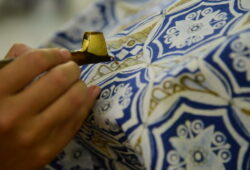Museums of Fine Art: New Cultural Centres
 Posted On
Posted On
By presenting a diverse collection, museums of fine art cater to the interests of a wide audience, ensuring that there is something for everyone to enjoy.
Museums of fine art have long served as important cultural institutions, attracting diverse audiences and providing a platform for the appreciation and preservation of artistic masterpieces. These museums play a crucial role in making art accessible to the public, fostering education, and enriching the cultural fabric of communities worldwide.
One of the primary goals of museums of fine art is to engage the public. They serve as spaces where individuals from different backgrounds can come together to experience and appreciate art. These museums offer a range of exhibitions, showcasing a variety of artistic styles, movements, and periods. From ancient civilizations to contemporary works, they provide a comprehensive overview of human creativity. By presenting a diverse collection, museums of fine art cater to the interests of a wide audience, ensuring that there is something for everyone to enjoy.
Furthermore, museums of fine art actively seek to cultivate an inclusive environment that welcomes visitors from all walks of life. They aim to break down barriers and create opportunities for individuals who might not have had prior exposure to art. This is often achieved through educational programs, outreach initiatives, and community partnerships. Museums organize guided tours, workshops, lectures, and interactive activities that enable visitors to deepen their understanding of art and develop a personal connection to the works on display.
In addition to educational outreach, museums of fine art strive to provide accessible experiences for people with disabilities. They are increasingly implementing measures to ensure that their spaces, exhibitions, and programs are inclusive and accommodating. This may involve offering audio guides, tactile exhibits, captioning or sign language interpretation for videos, and other accommodations that enhance the accessibility of the museum-going experience. By doing so, museums aim to ensure that everyone can fully participate and engage with the art on display.
Museums of fine art also play a vital role in fostering cultural exchange and understanding. They serve as meeting points for people of different backgrounds, fostering dialogue and promoting cross-cultural appreciation. Exhibitions featuring international artists or art from different regions of the world contribute to a broader understanding and appreciation of diverse cultures. This exposure to different perspectives and artistic traditions helps to bridge gaps and promote empathy and understanding among the public.
Furthermore, museums of fine art contribute to the economic development of their surrounding communities. They attract visitors from near and far, stimulating tourism and generating revenue for local businesses. The presence of a thriving museum often leads to the development of a cultural district, with restaurants, cafes, and other attractions springing up in the vicinity. This not only enhances the quality of life for residents but also creates employment opportunities and contributes to the overall economic vitality of the area.
Overall, museums of fine art serve as crucial cultural institutions that engage the public, foster education, and enrich communities. They provide a diverse range of exhibitions, educational programs, and outreach initiatives to make art accessible to a wide audience. By embracing inclusivity and promoting cross-cultural understanding, museums of fine art help to bridge gaps and foster empathy. Moreover, they contribute to the economic development of their communities by attracting visitors and stimulating tourism. Museums of fine art are essential pillars of our cultural landscape, preserving artistic heritage and inspiring generations to come.



